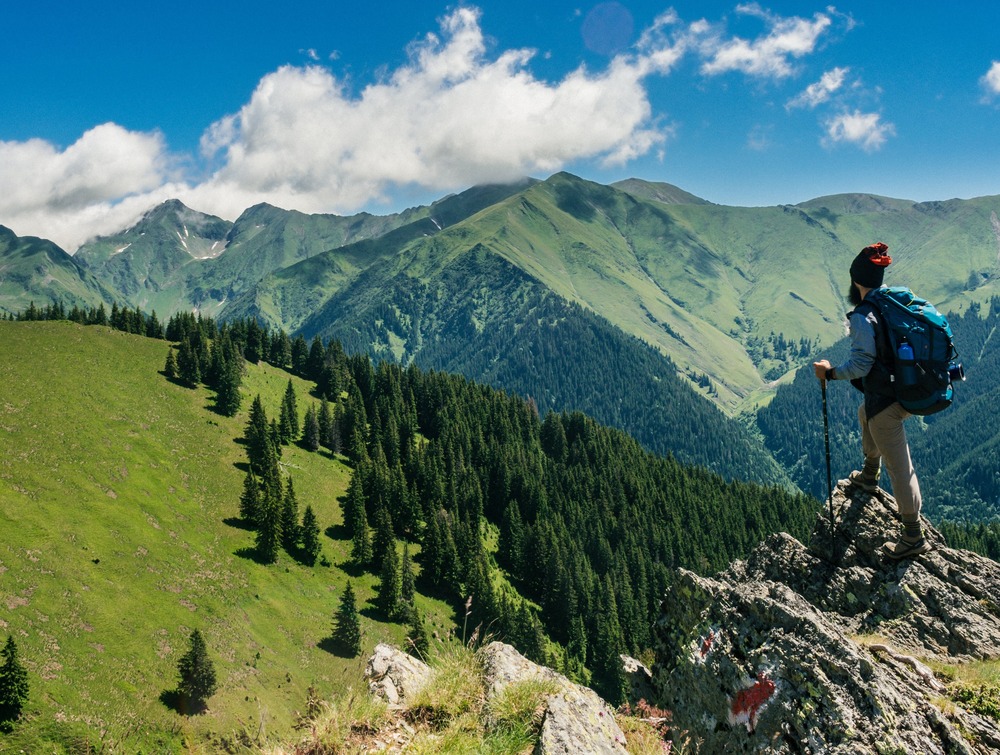Discover the ultimate guide to hiking gear essentials! From footwear to safety tips, our article covers it all. Perfect for beginners and seasoned hikers alike. Learn what to pack, wear, and expect on your next outdoor adventure. Get ready to hit the trails with confidence. So, Master Your Hike: Essential Gear Guide for Every Trail Adventure. Let`s get started.
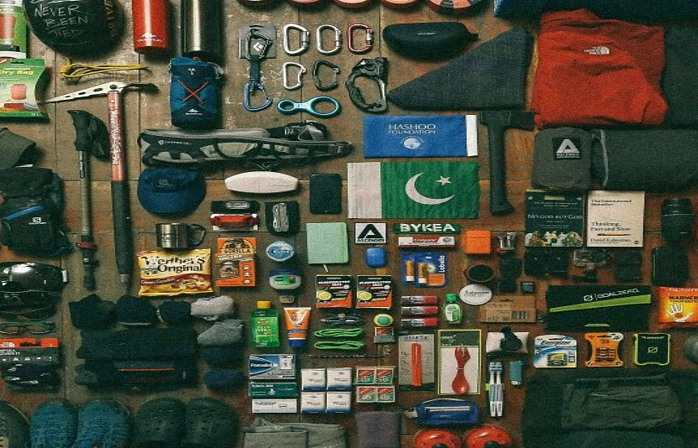 Image courtesy of Muhammad Masood Unsplash
Image courtesy of Muhammad Masood Unsplash
Embracing the Summit: A Comprehensive Guide to Essential Hiking Gear
Imagine standing atop a misty peak, the world unfurling below you in a tapestry of wild beauty. Your heart races with a mix of exhilaration and serene peace, a reward for the journey you’ve embarked upon. This is the essence of hiking, a blend of challenge and tranquillity that beckons adventurers of all types. However, the key to unlocking this experience lies in the gear you carry with you.
Hiking, more than just a stroll, is an exploration of both the natural world and one’s inner self. As the popularity of this timeless activity grows, so does the importance of being well-equipped. The right gear not only enhances your comfort and safety but also deepens your connection with the trail and the environment.
In this comprehensive guide, we will look into the essentials of hiking gear, ensuring that whether you’re a seasoned explorer or setting foot on the path for the first time, you are fully prepared for the journey ahead.
From the foundational choice of footwear to the difference in clothing and accessories, we cover every aspect to help you step confidently into the wilderness. Let’s embark on this journey together, exploring the essential gear that will make your hiking adventures not only possible but also unforgettable.
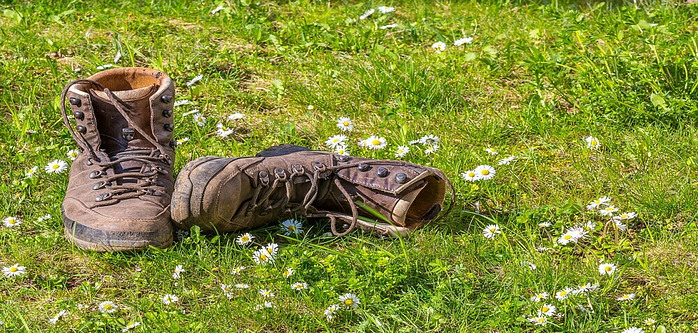 Image courtesy of Maxmann Pixabay
Image courtesy of Maxmann Pixabay
Footwear: The Foundation of Your Hike
When you embark on a hiking adventure, the first step is literally about what you wear on your feet. Your footwear is not just a covering for your feet, it’s the crucial link between you and the terrain. The right hiking shoes or boots can transform your experience, offering support, protection, and comfort, even in challenging conditions.
Boots, Shoes, and Sandals
When it comes to hiking footwear, there’s no one-size-fits-all solution. Your choice depends on various factors like the type of hike, the terrain, and personal comfort. Hiking boots offer more support and are generally preferred for rough terrain and longer treks. They protect your ankles and provide better grip and stability on uneven ground.
However, for less demanding trails or warmer conditions, hiking shoes might be more suitable. They are lighter and more flexible than boots, offering comfort and breathability. Some hikers even prefer hiking sandals for short, easy trails, especially in hot weather. These provide basic protection while keeping your feet cool.
Factors to Consider
When choosing your hiking footwear, consider the terrain you’ll be exploring. Rocky, uneven trails demand sturdy boots with good ankle support, while well-maintained paths may only require lightweight shoes or sandals. The climate plays a role too. In wet or cold conditions, waterproof boots are essential to keep your feet dry and warm. In contrast, breathable shoes or sandals are better for hot and dry environments.
Think about the duration of your hike. For longer treks, you need durable footwear that provides sustained comfort and support. It’s important to break in new hiking boots or shoes before a long hike to prevent blisters and discomfort.
Recommendations
Some popular choices among hikers include Gore-Tex Salomon boots, known for their waterproof quality and comfort. For those looking for something lighter, trail running shoes are an option, offering a balance of support and agility. Remember, the best hiking footwear is the one that fits well and suits your specific hiking needs.
Your choice of footwear is foundational to a successful hike. It’s about finding the right balance between support, protection, and comfort, tailored to the specifics of your hiking adventure. With the right shoes or boots, every step you take on the trail can be a step towards a memorable outdoor experience.
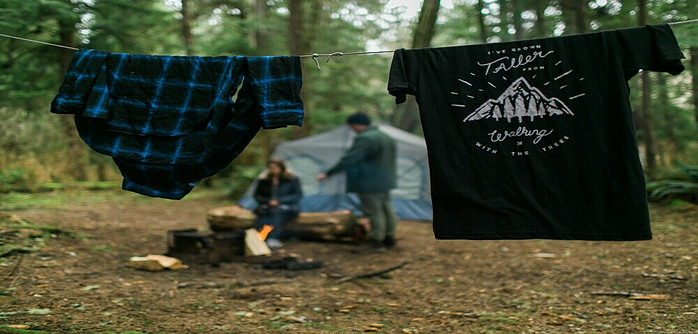 Image courtesy of Nathan Dumlao Unsplash
Image courtesy of Nathan Dumlao Unsplash
Clothing: Dressing for the Elements
Beyond footwear, your clothing choices play a pivotal role in your hiking experience. The right apparel not only provides comfort and protection from the elements but also affects your overall performance on the trail. When dressing for a hike, it’s crucial to consider factors like the weather, trail conditions, and the hike’s duration.
Layering for Different Weather Conditions
Layering clothing is key to staying comfortable in varying weather conditions. Start with a base layer that wicks moisture away from your skin, followed by an insulating layer to keep you warm, and finally, an outer layer to protect against wind and rain. This approach allows you to add or remove layers as needed, adapting to changes in temperature and activity level.
In warmer weather, a single layer may suffice but always be prepared for sudden weather changes. For cold conditions, thermal and fleece layers are essential. They keep you warm without adding too much bulk and can be easily removed if you get too warm.
Choosing Between Shorts and Long Trousers
The decision between shorts and long trousers depends on several factors like the trail’s nature, weather, and personal preference. Shorts provide more freedom of movement and are cooler in hot weather, but they offer less protection against scratches from vegetation, sunburn, and insect bites.
Trousers provide better protection against the elements and are preferable in cooler climates or dense, brushy trails. Modern hiking trousers are designed to be lightweight and breathable while offering protection. Some even have zip-off legs, combining the benefits of both shorts and trousers. Consider the use of Gaiters to protect your legs and feet from stones, mud, wet grass, ticks and brambles.
Material Considerations: Selecting the Right Fabrics
The choice of fabric in your hiking apparel is crucial. Stay away from cotton in damp or chilly conditions as it holds moisture and dries slowly. Instead, choose fabrics such as nylon, polyester, and merino wool, which offer breathability and quick drying capabilities.
Merino wool stands out for its temperature regulation properties, providing warmth in cold weather and coolness in hot conditions. It’s also naturally resistant to odours, making it perfect for extended hiking trips.
Selecting clothing should prioritize function and comfort. Experiment with various options to discover what suits you best. Appropriate attire not only offers protection against the weather but also enhances your hiking experience by allowing you to concentrate on the trail’s beauty and challenges.
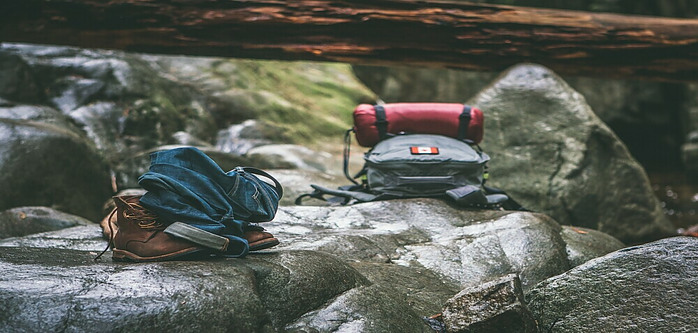 Image courtesy of Pexels Pixabay
Image courtesy of Pexels Pixabay
Backpacks: Choosing Between Daypacks and Multi-Day Packs
A quality backpack is essential for carrying your essentials comfortably during hikes. The ideal backpack will greatly influence your endurance and comfort levels. When choosing a pack, consider its size, fit, and intended use.
Daypacks vs Backpacking Packs
For brief day hikes, a daypack suffices. These smaller packs, typically 10 to 30 litres, are designed to hold necessities such as water, snacks, a first aid kit, and a lightweight jacket. Daypacks are advantageous for their lightness and ease of use for short excursions.
In contrast, longer hikes necessitate a larger backpack, ranging from 50 to 120 litres, to accommodate additional clothing, food, a sleeping bag, and potentially a tent. These backpacks are engineered to more effectively distribute weight and offer better support, crucial for carrying heavier loads over extended periods.
Importance of a Quality Backpack
A well-crafted backpack can significantly improve your hiking experience. Features to look for include padded shoulder straps, a supportive waist belt, and a breathable back panel, which help in evenly distributing weight and minimizing shoulder and back strain.
Additionally, evaluate the backpack’s material and durability. Backpacks with water-resistant or waterproof properties are advantageous in unpredictable weather conditions. Look for designs with multiple pockets and compartments for organization, and external attachment points for gear like trekking poles.
Example: The Arc Zip Ultra 62L Backpack
The Arc Zip Ultra 62L Backpack (£378.00) is favoured by experienced hikers for its balance of a lightweight build and sturdiness, offering ample space for several days of hiking necessities. Its ergonomic design ensures comfort under heavy loads, making it ideal for lengthy treks.
The right backpack for you depends on your specific hiking needs. Investing in a high-quality, well-fitting pack is crucial, as it not only carries your equipment but also contributes to a more enjoyable and comfortable hiking journey.
 Image courtesy of Corey Agopian Unsplash
Image courtesy of Corey Agopian Unsplash
Weather Protection: Jackets, Pants, and Accessories
Being prepared for weather shifts is essential when hiking. Appropriate attire can shield you from rain, wind, and sun, keeping your hike enjoyable under various conditions. This section highlights key items such as jackets, pants, and accessories vital for weather protection.
Jackets and Trousers
A dependable waterproof jacket is a hiking necessity, acting as a barrier against rain and wind to keep you dry and comfortable. Opting for jackets that are breathable to allow body moisture to escape, which is vital to avoid overheating and excessive sweating during physical exertion.
Waterproof trousers are similarly crucial, particularly in changeable weather. They not only provide rain protection but can also add an extra layer of warmth. Many waterproof trousers are designed to be light and compact, making them convenient to carry when not in use.
Selecting the Right Material
When choosing jackets and trousers, the material is a key consideration. Materials like Gore-Tex offer excellent water resistance while maintaining breathability. The durability of the material is also important for enduring the challenges of hiking.
Accessories: Hats, Sunglasses, and Gloves
Accessories such as hats, sunglasses, and gloves are significant in protecting against the elements. A quality hat can shield your head from sun exposure or keep it warm in cooler conditions. For sunglasses, choose polarized lenses, particularly if you’ll be hiking in areas with reflective surfaces like water or snow.
Gloves are vital in cold weather to maintain warm and functional hands. If hiking in wet or snowy environments, opt for gloves that are both waterproof and insulated.
Recommendations
For jackets and trousers, consider the Black Diamond StormLine Stretch Rain Shell and REI Co-op Trailmade Rain Trousers, which are noted for their balance of weight, protection, and durability. For accessories, the Outdoor Research Swift Visor is a solid choice for sun protection, and a pair of polarized sunglasses can greatly reduce eye strain.
Equipping yourself with the right weather protection gear is key to a comfortable hiking experience. It not only shields you from the elements but also ensures that you can continue your adventure regardless of weather changes. Being prepared with the right jackets, trousers, and accessories allows you to focus more on the journey and less on the weather.
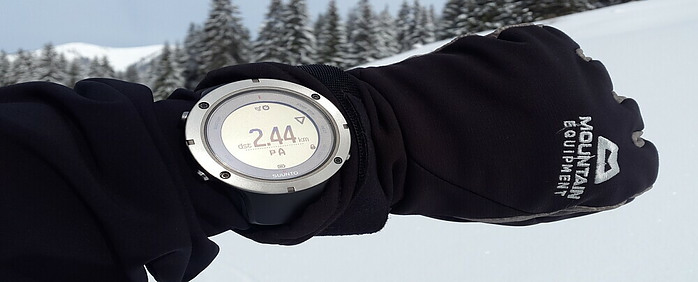 Image courtesy of Simon Pixabay
Image courtesy of Simon Pixabay
Navigation and Safety
In the world of hiking, staying on track and ensuring safety are paramount. Navigation tools and safety equipment are essential components of your hiking kit. These items not only help you find your way but also provide a means of assistance in case of emergencies.
GPS Devices and Watches
GPS devices have become a staple for modern hikers. They provide detailed information about your hike, including distance, total ascent, and moving time. Many GPS devices also allow you to load a GPX file of your planned route, ensuring you stay on the correct path. Some recommended models include the Garmin 64s and the Garmin InReach Explorer Plus, which offer accurate navigation and additional features like satellite communication.
Watches with GPS functionality, like the Garmin Fenix series, are a convenient alternative to handheld devices. They provide similar navigation capabilities and additional fitness-tracking features. These watches are especially useful on backcountry hikes, where carrying minimal gear is crucial.
First Aid Kit Essentials
A well-stocked first aid kit is a must-have on any hike. It should include items such as bandages, antiseptic wipes, pain relievers, and blister treatment supplies. Personal medications and any specific items for known allergies or conditions should also be included.
The contents of your first aid kit might vary based on the length and nature of your hike. For longer or more remote hikes, consider adding more comprehensive supplies like a splint or a thermal blanket.
Emergency Signalling Devices
In addition to a first aid kit, carrying an emergency signalling device is a wise safety precaution. Devices like a whistle or a mirror can be invaluable in attracting attention in case of an emergency. These are lightweight, easy to carry, and can be a lifeline if you find yourself in a distressing situation.
For remote areas with limited or no cell phone coverage, a satellite communicator can be a lifesaver. These devices allow you to send distress signals and communicate with rescue services, even from the most isolated locations.
Navigation and safety gear are critical for a successful and secure hiking experience. While we all hope for an uneventful hike, being prepared with the right tools and knowledge can make all the difference in an emergency. Equip yourself with reliable navigation tools and a comprehensive safety kit to ensure peace of mind as you explore the great outdoors.
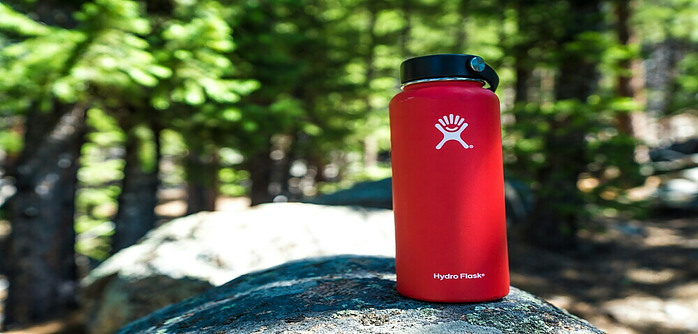 Image courtesy of Evan Wise Unsplash
Image courtesy of Evan Wise Unsplash
Hydration and Nutrition
An often-overlooked aspect of hiking preparation is ensuring adequate hydration and nutrition. The physical exertion of hiking, especially over long distances or in challenging terrain, significantly increases your body’s need for water and energy. Managing these needs is crucial for maintaining stamina and enjoyment during your hike.
Hydration: Water Bottles vs Hydration Bladders
Staying hydrated is essential for any hike. Dehydration can lead to fatigue, reduced coordination, and even heat stroke. The choice between water bottles and hydration bladders depends on personal preference and the nature of your hike. Water bottles are simple to use and refill but might require more frequent stops to access them from your pack. Make sure to purify water on your trip.
Hydration bladders, on the other hand, offer the convenience of hands-free drinking through a hose. This can encourage more frequent sipping and is especially useful during strenuous hikes or when carrying a heavy backpack. Regardless of your choice, the key is to carry enough water for your hike, considering factors like weather, intensity, and duration.
Nutrition: Energy Requirements
Hiking burns a considerable amount of energy, and replenishing that energy is crucial. Snacks like energy bars, nuts, and fruit are great for short hikes. They are easy to carry, don’t require preparation, and provide a quick energy boost.
For longer hikes, your nutritional needs increase. High-energy, lightweight foods like trail mix, beef jerky, and dried fruits are ideal. If your hike spans several days, you’ll need more substantial meals. Freeze-dried meals are a convenient option as they are lightweight, easy to prepare, and come in various flavours.
Balance and Planning
The key to managing your hydration and nutrition is balance and planning. Ensure your food and water supply matches the intensity and length of your hike. It’s also a good idea to carry a little extra as a precaution. Staying well-hydrated and properly fuelled will keep your energy levels up and help you enjoy your hike to the fullest.
Proper hydration and nutrition are critical to a successful and enjoyable hiking experience. They not only provide the energy and stamina needed for your hike but also ensure your safety and well-being on the trail. By planning and packing appropriately, you can ensure that your body has the resources it needs for a memorable outdoor adventure.
 Image courtesy of KVNSBL Pixabay
Image courtesy of KVNSBL Pixabay
Additional Gear for Specific Conditions
Hiking is a year-round activity, but each season and terrain requires specific gear for safety and comfort. Whether you’re venturing into snowy landscapes or planning a multi-day trek, being equipped with the right gear is crucial. This section explores the additional equipment needed for winter hikes and multi-day adventures.
Winter Hiking Gear
Winter hiking offers stunning landscapes but also presents unique challenges such as cold temperatures and slippery surfaces. Insulated clothing is a must. Layers made of wool or synthetic fibres provide warmth without excessive bulk. Waterproof gear, including jackets and trousers, is vital to protect against snow and ice.
Footwear is especially important in winter. Insulated and waterproof boots keep your feet warm and dry, while traction devices like crampons or snowshoes are essential for stability on icy or snowy trails. Also, consider carrying hand and foot warmers for extra comfort during particularly cold hikes.
Sun Protection in Winter
Despite the cold, sun protection remains important in winter. Snow reflects sunlight, increasing the risk of sunburn. Wear sun protection, sunglasses, and a hat to protect you from UV rays. Polarized sunglasses are particularly helpful against the glare of snow.
Gear for Multi-Day Hikes
When planning a multi-day hike, your gear list extends beyond what you’d carry for a day hike. A reliable, lightweight tent provides shelter from the elements. A good quality sleeping bag and pad are essential for a comfortable night’s sleep, keeping you warm in various temperatures.
Cooking equipment, including a stove, fuel, utensils, and food, is necessary for meal preparation. Don’t forget a water filter or purification method for safe drinking water. A headlamp or torch is crucial for navigating and setting up camp after dark.
Emergency Rations and First Aid
Always pack a first aid kit, tailored to the length and remoteness of your hike. Include basic medical supplies and any personal medications. Emergency rations, like freeze-dried meals, are a smart addition in case your hike takes longer than planned.
Preparing for specific hiking conditions ensures not only your comfort but also your safety. Whether you’re braving the cold of winter or embarking on a multi-day journey, the right gear allows you to fully immerse yourself in the experience. Careful planning and packing for these conditions will enable you to tackle any trail with confidence.
 Image courtesy of Florida-Guidebook.com Unsplash
Image courtesy of Florida-Guidebook.com Unsplash
Trail Etiquette and Leave No Trace Principles
As hikers, we have a responsibility to protect the natural environments we explore. This includes following trail etiquette and adhering to Leave No Trace principles. By doing so, we ensure that the trails and wild places remain beautiful and accessible for future adventurers.
Staying on Designated Trails
One of the fundamental aspects of trail etiquette is staying on marked paths. This helps to prevent soil erosion and protects native plants and animals. Venturing off the designated trail can damage fragile ecosystems and disrupt wildlife habitats. Staying on the trail helps prevent getting lost and minimizes the risk of accidents. It’s important to be mindful of your surroundings and follow posted signs and markers.
Leave No Trace Principles
The Leave No Trace principles are a set of guidelines aimed at minimizing our impact on the environment. They include packing out all your rubbish, being considerate of other visitors, and respecting wildlife. Leaving what you find, such as rocks, plants, and historical artefacts, ensures that the trail remains as natural as possible.
Another key principle is to minimize campfire impacts. If fires are permitted, use established fire pits, keep fires small, and make sure they’re completely extinguished before leaving. In sensitive areas, it’s best to avoid fires altogether.
Packing Out Trash and Planning
An essential part of Leave No Trace is to pack out all your rubbish, including food scraps and biodegradable materials. Plan your meals and snacks to minimize waste and carry a small trash bag to collect your garbage.
It’s also important to plan your trip to match your skill level and the trail’s difficulty. Be aware of weather forecasts and trail conditions, and always let someone know your plans before you head out.
Following trail etiquette and Leave No Trace principles, you contribute to the preservation of the natural world for others to enjoy. These practices reflect our respect for nature and our commitment to responsible hiking. Let’s all do our part to keep the great outdoors pristine and welcoming for everyone.
 Image courtesy of Kelly Sikkema Unsplash
Image courtesy of Kelly Sikkema Unsplash
Understanding Trail Difficulty Ratings
When planning a hike, understanding trail difficulty ratings is essential for a safe and enjoyable experience. These ratings provide valuable insights into what to expect on the trail, helping hikers choose a path that matches their skill level and fitness.
Explanation of Trail Difficulty Ratings
Trail ratings typically fall into three categories: easy, moderate, and rugged. Each rating gives a general idea of the trail’s physical demands and the kind of terrain you’ll encounter.
Easy trails are usually flat and well-maintained, making them suitable for beginners or those looking for a leisurely walk. They often have clear markings and minimal obstacles, making them accessible to people of all ages and abilities.
Moderate and Rugged Trails
Moderate trails offer more of a challenge. They may include steeper sections, uneven terrain, and longer distances. These trails require a bit more physical fitness and hiking experience. They often provide more scenic views and opportunities for wildlife spotting, making them a rewarding choice for those with some hiking experience.
Rugged trails are the most challenging. They typically feature steep inclines, and rough terrain, and may require some basic navigation skills. These trails are best suited for experienced hikers seeking adventure and a physical challenge. It’s important to be well-prepared with the right gear and knowledge for these types of hikes.
Choosing the Right Trail
Selecting the right trail involves assessing your physical fitness, experience, and the kind of experience you’re looking for. Start with easier trails if you’re new to hiking and gradually build up to more challenging hikes. Always research the trail beforehand, and don’t hesitate to turn back if the trail becomes too difficult.
Understanding trail difficulty ratings is key to a safe and enjoyable hiking experience. By choosing a trail that aligns with your abilities, you can enjoy the beauty of nature while ensuring your safety and comfort. As you gain more experience, you can gradually take on more challenging trails, expanding your hiking adventures.
 Image courtesy of Zdenek Machacek Unsplash
Image courtesy of Zdenek Machacek Unsplash
Commonly Asked Hiking Questions
Hiking, like any outdoor activity, often raises questions, especially among those new to the experience. Addressing common concerns not only prepares you for the journey ahead but also enhances your safety and enjoyment. In this section, we’ll answer some frequently asked questions about hiking.
How do I Treat Blisters While Hiking?
Blisters are a common issue for hikers, often caused by friction between the skin and footwear. Preventive measures include wearing well-fitted hiking boots and moisture-wicking socks. Carrying moleskin can help protect areas prone to blisters.
If a blister does form, cover it with a bandage or moleskin to prevent further irritation. Avoid bursting the blister, as this can sometimes lead to infection. After your hike, clean the area and keep it covered until it heals.
What do I do if I Encounter Dangerous Wildlife?
Encountering wildlife is a possibility during hikes, especially in natural parks and wilderness areas. The key is to observe animals from a safe distance. Never approach, feed, or try to interact with wildlife, as this can be dangerous for both you and the animals.
Be aware of your surroundings and make noise while hiking, especially in areas known for bears or other large mammals. This helps avoid surprising animals and gives them a chance to move away.
Are Leave No Trace Principles Important?
The Leave No Trace principles are crucial for protecting natural environments. Always pack out your trash, including biodegradable items. Stay on designated trails to prevent damaging vegetation and soil. Respect wildlife and avoid disturbing natural habitats.
If you build a fire, use established fire pits and ensure the fire is completely extinguished before leaving. The goal is to minimize your impact on the environment, leaving nature as you found it.
What is Good Appropriate Clothing?
Dressing appropriately is vital for a comfortable hike. Wear clothing that can be easily added or removed as required. Choose moisture-wicking fabrics like polyester or merino wool to keep you dry and comfortable.
Consider the weather and terrain when selecting your clothing. In sunny conditions, a hat and sunglasses protect against sun exposure. In cooler weather, an insulating layer and a windproof jacket are essential.
Being well-informed and prepared is key to a successful hiking experience. By understanding how to handle common situations and questions, you can confidently enjoy your time on the trail. Remember, every hike is an opportunity to learn and grow as an outdoor enthusiast.
Conclusion
As we conclude our comprehensive guide to essential hiking gear, it’s important to reflect on the journey we’ve taken together. From understanding the importance of proper footwear to learning about the necessity of weather-appropriate clothing and safety gear, this guide has aimed to equip you with the knowledge needed for a fulfilling hiking experience.
Throughout this guide, we’ve explored various aspects of hiking gear, emphasizing how each item plays a crucial role in your overall experience. Proper footwear provides the foundation for every step you take, while suitable clothing ensures comfort and protection in various weather conditions. Choosing the right backpack enables you to carry your essentials effortlessly, and understanding the importance of weather protection gear keeps you safe from the elements.
I’ve also highlighted the importance of preparation and safety. Navigating trails with the right tools, ensuring adequate hydration and nutrition, and being prepared for specific hiking conditions are all part of a responsible hiker’s checklist. Adhering to trail etiquette and Leave No Trace principles not only makes your journey more enjoyable but also preserves the natural beauty of the environment for future explorers.
As you embark on your hiking adventures, remember that each trail offers a unique experience and an opportunity to connect with nature. Whether you’re a beginner or a seasoned hiker, there’s always something new to discover and learn. Use this guide as a reference to prepare for your hikes, and feel confident in your ability to tackle any trail with the right gear and mindset. Remember, if you are new to hiking, start local and get used to setting up your equipment and cooking. Gain some experience before you head out on the trails.
Hiking is more than just a physical activity, it’s a journey of discovery and appreciation for the great outdoors. With the right gear, preparation, and respect for nature, your hiking adventures can lead to unforgettable experiences and a deeper connection with the natural world. Keep exploring, stay safe, and enjoy the countless trails that await you.


